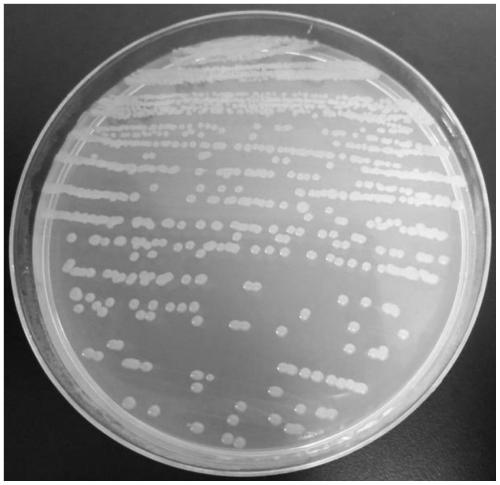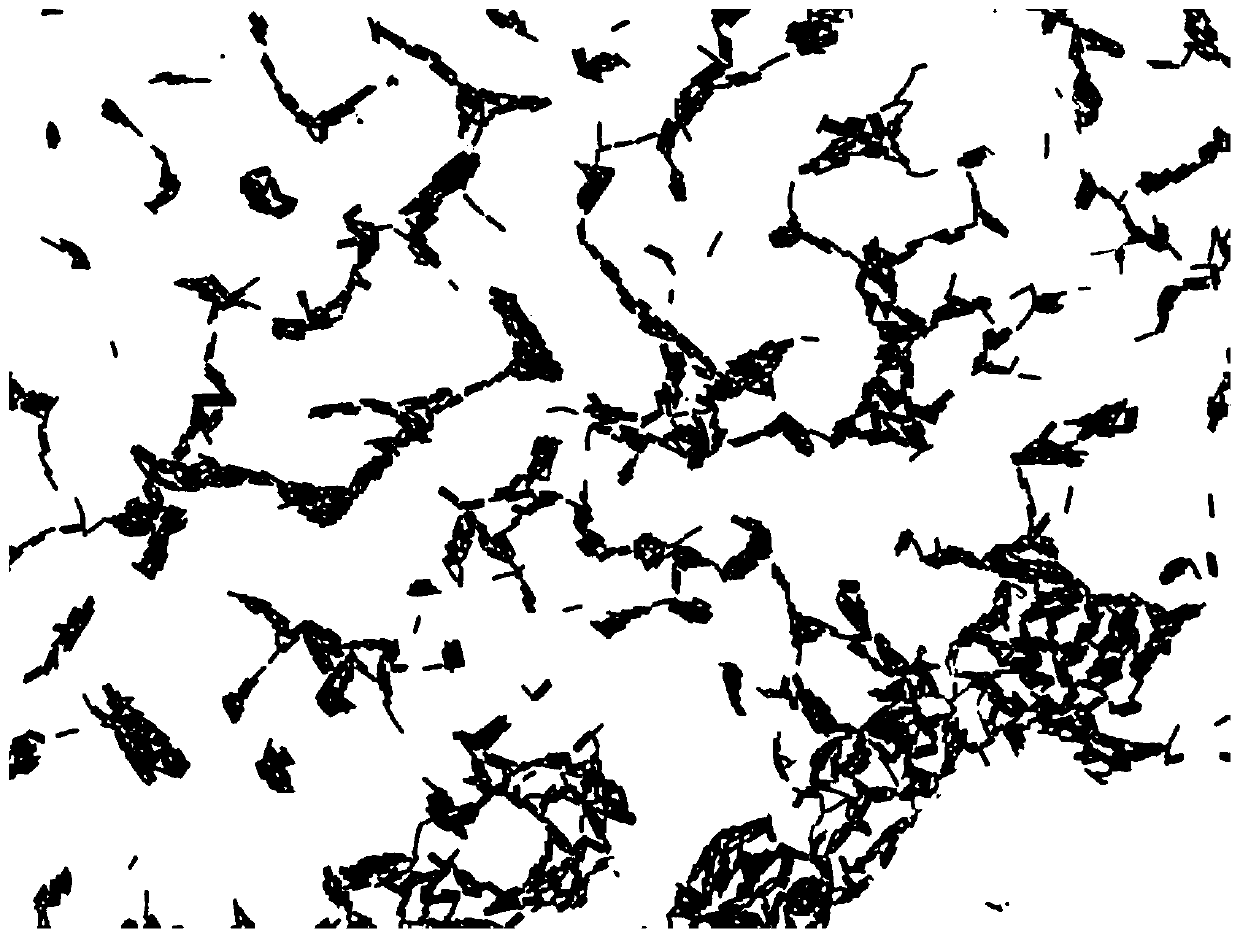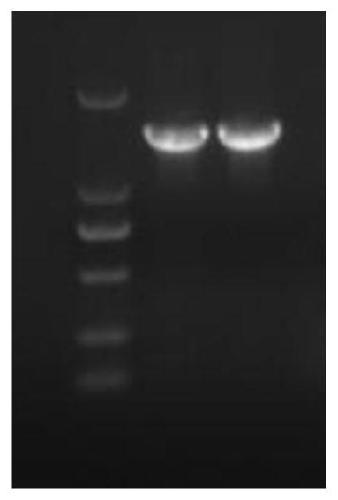Bacillus subtilis and application thereof
A technology of Bacillus subtilis and microbial strains, applied in the field of Bacillus subtilis, can solve problems such as antibiotic pollution and increased drug resistance, and achieve strong protease and amylase production, good tolerance, and strong cell adhesion Effect
- Summary
- Abstract
- Description
- Claims
- Application Information
AI Technical Summary
Problems solved by technology
Method used
Image
Examples
Embodiment 1
[0023] Isolation and identification of embodiment one Bacillus subtilis
[0024] 1.1 Isolation of strains
[0025] The Bacillus subtilis BSC16a (Bacillus subtilis BSC16a) of the present invention is isolated and screened from fresh feces of healthy pigs in Sichuan Province, with a total of 86 samples. The specific separation and purification method is as follows: weigh 10 g of stool sample, dilute and mix with 90 mL sterile PBS, filter, take 1 mL of the filtrate, centrifuge, discard the supernatant; Cultivate for 48 hours, heat-treat at 80°C for 10 minutes, centrifuge, and discard the supernatant; add 1 mL of nutrient broth culture solution again, vortex, and shake at 37°C for 24 hours; the mixture is properly diluted and spread on a nutrient agar (NA) plate for 37 Cultivate at ℃ for 10h.
[0026] The aseptic PBS formula of the above-mentioned use of the present invention is as follows:
[0027] Weigh NaCl 8.0g, KCl 0.2g, NaCl 2 HPO 4 1.42 g, KH 2 PO 4 Add 0.27 g into 8...
Embodiment 2
[0036] The screening of embodiment Bacillus subtilis
[0037] 2.1 Screening of tolerant Bacillus subtilis
[0038] Take 1 mL of the fresh culture solution of Bacillus subtilis and inoculate it into sterile PBS with pH = 2.5 and containing 0.3% porcine bile salt. After culturing for 3 hours at 37°C, take samples and serially dilute them to 10 -4 、10 -5 , draw 0.1mL of the diluted solution and spread it on the NA plate, count and measure the number of viable bacteria after incubating at 37°C for 12 hours, and calculate the survival rate with the number of viable bacteria at 0h as the control.
[0039] The results of the tolerance test showed that only 18% of the tested Bacillus subtilis were extremely sensitive to acids and bile salts, and the survival rate was lower than 30%; the rest could tolerate both pH=2.5 and In the environment of 0.3% bile salts, the survival rate is higher than 80%.
[0040] 2.2 Screening of antibacterial Bacillus subtilis
[0041] Centrifuge the ac...
Embodiment 3
[0055] The biological characteristic research of embodiment Bacillus subtilis BSC16a
[0056] 3.1 Activation of Bacillus subtilis BSC16a and preparation of its seed solution
[0057] The frozen Bacillus subtilis BSC16a was taken out from the -20°C refrigerator, melted rapidly in a 37°C water bath, and streaked on the NA plate. After culturing at 37°C for 10 hours, a single colony was picked and inoculated in 10 mL of nutrient broth medium. Cultivate with shaking at 220rpm / min for 18h. After two consecutive subcultures, the seed solution was prepared and set aside.
[0058] 3.2 Determination of the growth curve of Bacillus subtilis BSC16a
[0059] Take the seed solution of Bacillus subtilis BSC16a in 3.1, inoculate it in a nutrient broth medium with a 2% inoculum amount, and culture it with shaking at 37°C for 24 hours. Taking the uninoculated liquid medium as the control, samples were taken every 2 hours after inoculation to measure the OD of the bacterial solution 600 val...
PUM
| Property | Measurement | Unit |
|---|---|---|
| diameter | aaaaa | aaaaa |
Abstract
Description
Claims
Application Information
 Login to View More
Login to View More - R&D
- Intellectual Property
- Life Sciences
- Materials
- Tech Scout
- Unparalleled Data Quality
- Higher Quality Content
- 60% Fewer Hallucinations
Browse by: Latest US Patents, China's latest patents, Technical Efficacy Thesaurus, Application Domain, Technology Topic, Popular Technical Reports.
© 2025 PatSnap. All rights reserved.Legal|Privacy policy|Modern Slavery Act Transparency Statement|Sitemap|About US| Contact US: help@patsnap.com



